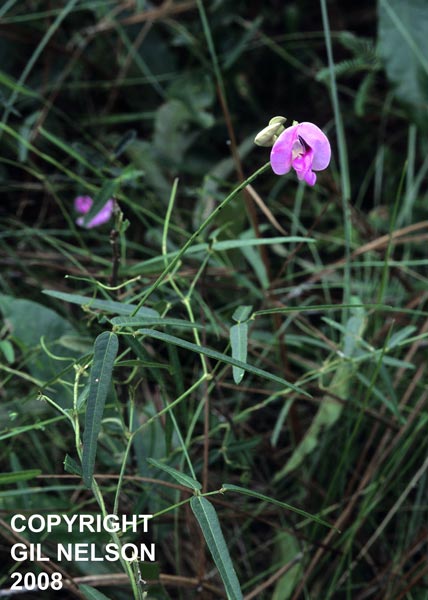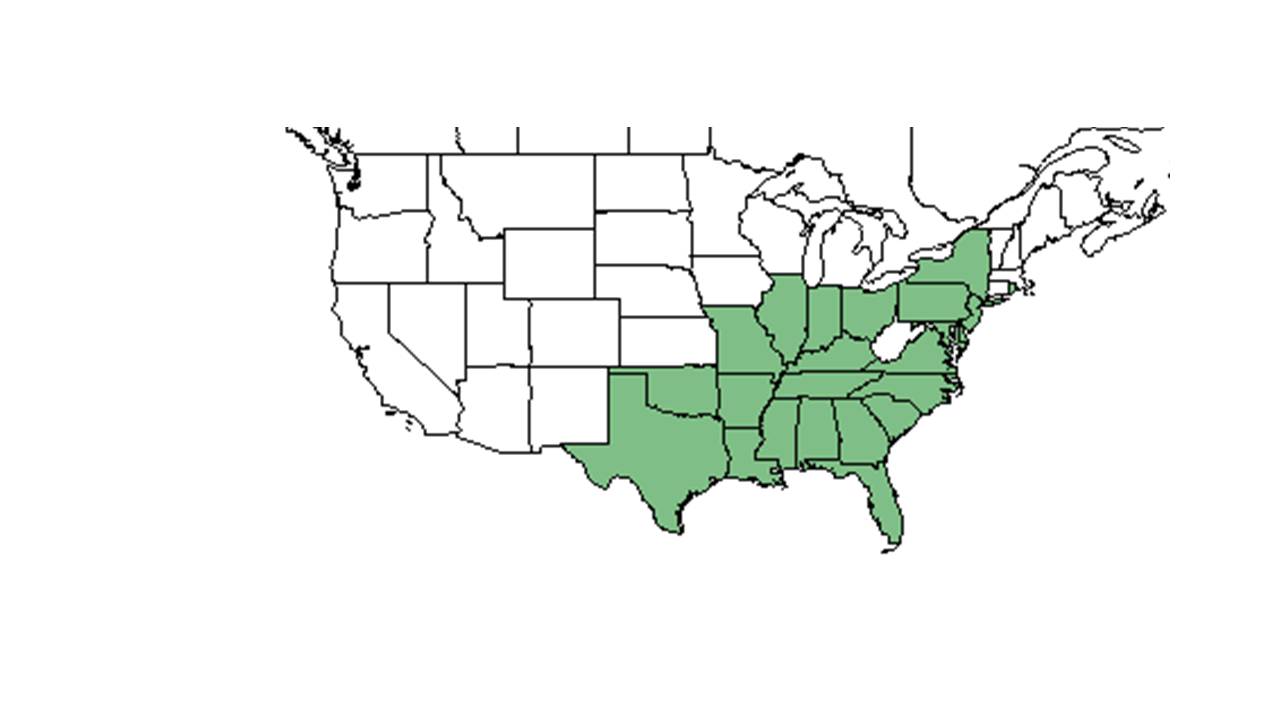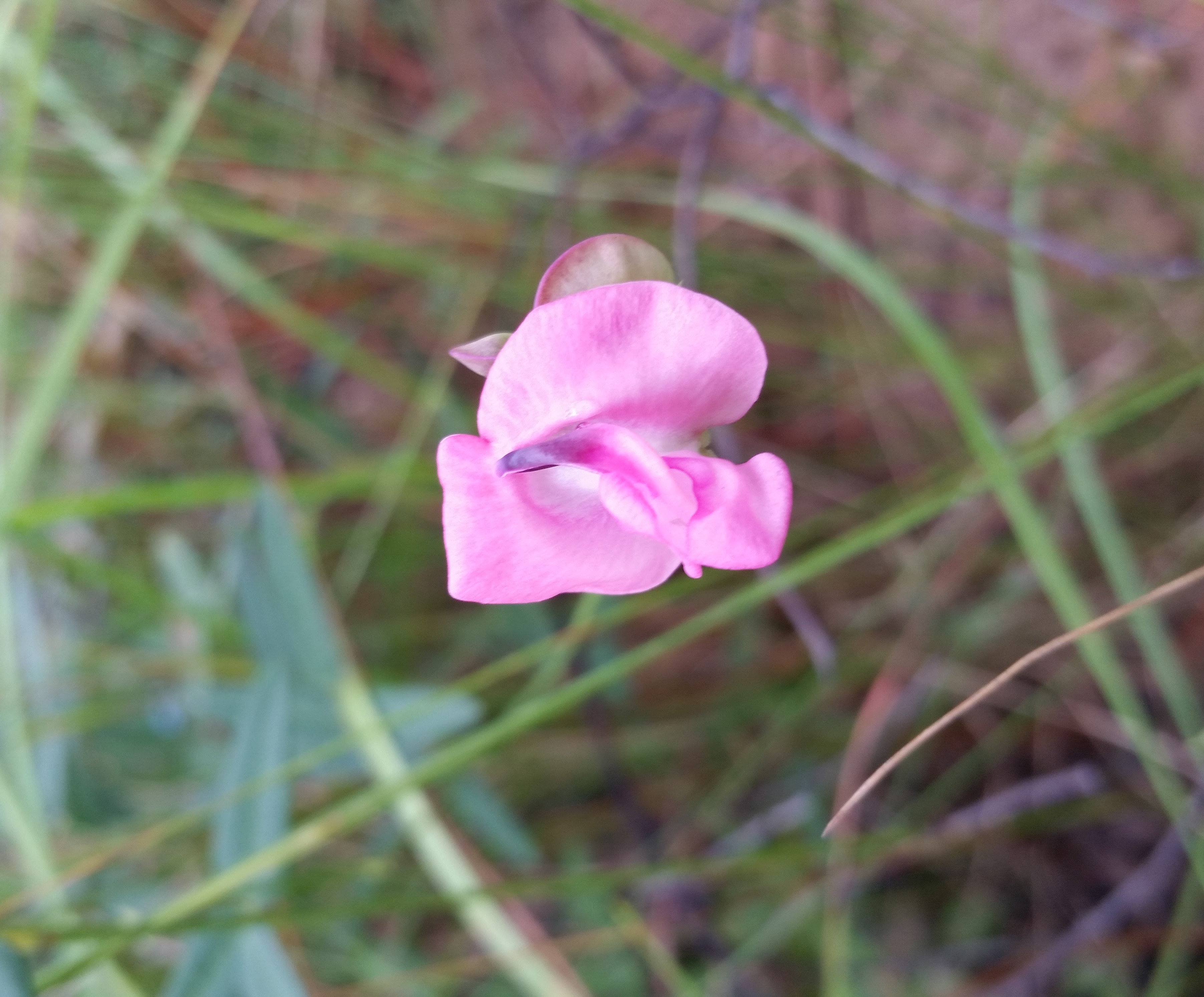Difference between revisions of "Strophostyles umbellata"
KatieMccoy (talk | contribs) |
KatieMccoy (talk | contribs) |
||
| Line 26: | Line 26: | ||
==Ecology== | ==Ecology== | ||
===Habitat=== <!--Natural communities, human disturbed habitats, topography, hydrology, soils, light, fire regime requirements for removal of competition, etc.--> | ===Habitat=== <!--Natural communities, human disturbed habitats, topography, hydrology, soils, light, fire regime requirements for removal of competition, etc.--> | ||
| − | + | In the Coastal Plain region, ''S. umbellata'' has been found in loamy sand of a depression bordering mesic flatwoods; understory of upland slash pinewoods; transition zone of longleaf pine flatwoods to pine savanna; semi-shaded loam in old growth longleaf pine forest; sand of open meadow; low savanna above creek floodplain; dry pine barrens; open pinewoods; open grassy clearing of upland pine woodland; floodplain shores of lakes; upland deciduous woods; slopes and ridges; and in a grassy area just above a fresh water marsh (FSU Herbarium; Hainds et al. 1999). It is predominately found in native groundcover, such as the upland pines of South Georgia (Ostertag and Robertson 2007). It has been documented in disturbed habitats such as loamy sand of roadside slopes, powerline corridors, loamy soil of roadside ditches, dikes on lake shores, white sandy bottoms of dried ponds, and in clay roadside banks. Outside of the Coastal Plain region in Indiana, it has been found in burned limestone glades (Wade and Menges 1986). | |
| + | |||
| + | Soil types include loamy sand, loam, sand, loamy soil, and clay (FSU Herbarium). Associated species include ''Crotalaria, Desmodium, Cassia fasciculata, Cephalanthus, Desmodium ochroleucum, D. lineatum, Habenaria integra, H. ciliaris'', and ''Aster umbellatus'' (FSU Herbarium). | ||
===Phenology=== <!--Timing off flowering, fruiting, seed dispersal, and environmental triggers. Cite PanFlora website if appropriate: http://www.gilnelson.com/PanFlora/ --> | ===Phenology=== <!--Timing off flowering, fruiting, seed dispersal, and environmental triggers. Cite PanFlora website if appropriate: http://www.gilnelson.com/PanFlora/ --> | ||
Revision as of 15:48, 14 October 2015
| Strophostyles umbellata | |
|---|---|

| |
| Photo taken by Gil Nelson | |
| Scientific classification | |
| Kingdom: | Plantae |
| Division: | Magnoliophyta – Flowering plants |
| Class: | Magnoliopsida – Dicotyledons |
| Order: | Fabales |
| Family: | Fabaceae ⁄ Leguminosae |
| Genus: | Strophostyles |
| Species: | S. umbellata |
| Binomial name | |
| Strophostyles umbellata (Muhl. ex Willd.) Britton | |

| |
| Natural range of Strophostyles umbellata from USDA NRCS Plants Database. | |
Common name: pink fuzzybean
Contents
Taxonomic notes
Description
Distribution
Ecology
Habitat
In the Coastal Plain region, S. umbellata has been found in loamy sand of a depression bordering mesic flatwoods; understory of upland slash pinewoods; transition zone of longleaf pine flatwoods to pine savanna; semi-shaded loam in old growth longleaf pine forest; sand of open meadow; low savanna above creek floodplain; dry pine barrens; open pinewoods; open grassy clearing of upland pine woodland; floodplain shores of lakes; upland deciduous woods; slopes and ridges; and in a grassy area just above a fresh water marsh (FSU Herbarium; Hainds et al. 1999). It is predominately found in native groundcover, such as the upland pines of South Georgia (Ostertag and Robertson 2007). It has been documented in disturbed habitats such as loamy sand of roadside slopes, powerline corridors, loamy soil of roadside ditches, dikes on lake shores, white sandy bottoms of dried ponds, and in clay roadside banks. Outside of the Coastal Plain region in Indiana, it has been found in burned limestone glades (Wade and Menges 1986).
Soil types include loamy sand, loam, sand, loamy soil, and clay (FSU Herbarium). Associated species include Crotalaria, Desmodium, Cassia fasciculata, Cephalanthus, Desmodium ochroleucum, D. lineatum, Habenaria integra, H. ciliaris, and Aster umbellatus (FSU Herbarium).
Phenology
It blooms from late June to early July (Hainds et al 1999).
Seed dispersal
Seed bank and germination
Fire ecology
It occurs in areas that are frequently burned (Hainds et al 1999).
Pollination
Use by animals
It is included in bobwhite quail diet (Sweeney 1981).
Diseases and parasites
Conservation and Management
Cultivation and restoration
Photo Gallery
References and notes
Hainds, M. J., R. J. Mitchell, B. J. Palik, L. R. Boring and D. H. Gjerstad. 1999. Distribution of native legumes (Leguminoseae) in frequently burned longleaf pine (Pinaceae)-wiregrass (Poaceae) ecosystems. American Journal of Botany 86:1606-1614.
Ostertag, T.E., and K.M. Robertson. 2007. A comparison of native versus old-field vegetation in upland pinelands managed with frequent fire, South Georgia, USA. Pages 109–120 in R.E. Masters and K.E.M. Galley (eds.). Proceedings of the 23rd Tall Timbers Fire Ecology Conference: Fire in Grassland and Shrubland Ecosystems.
Sweeney, J. M., C. R. Wenger and N. S. Yoho. 1981. Bobwhite quail food in young Arkansas loblolly pine plantations. Arkansas Experiment Station bulletin 852. Fayetteville, AR, University of Arkansas, Divisionn of Agriculture, Agricultural Experiment Station.
Wade, K. A. and E. S. Menges. 1987. Effects of fire on invasion and community structure of a southern Indiana cedar barrens. Indiana Academy of Science 96:273-286.
